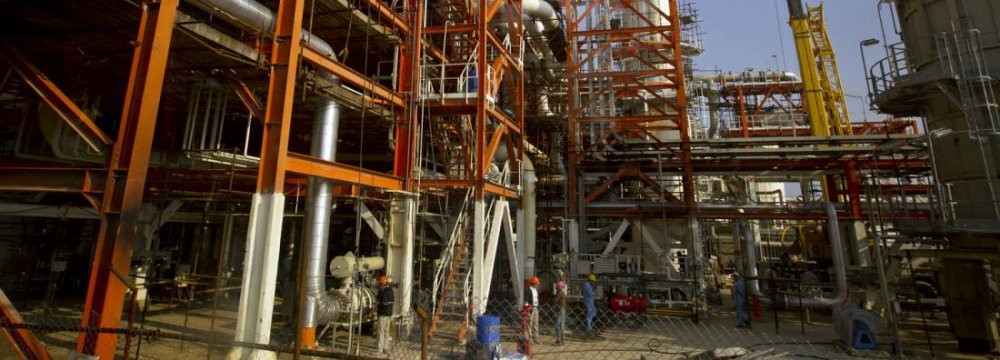Iran can boost oil revenues from its oilfields by billions of dollars using enhanced recovery methods, Gholamreza Manouchehri, the deputy for engineering and development at the National Iranian Oil Company, said.
"Raising the rate of recovery from oil reservoirs will bring in $400 billion in new revenues," Manouchehri was quoted as saying by IRNA.
"The average rate of recovery from Iran's oilfields is around 25% but it should reach 40%. In-place oil reserves are estimated at 800 billion barrels. Raising the recovery rate by merely 1% is equivalent to adding 8 billion barrels to production which would generate $400 billion at current crude prices."
Global crude benchmark Brent settled at $53.64 a barrel on Tuesday. Oil prices have jumped more than 20% since OPEC announced a deal in November to cut supplies by 1.2 million barrels per day.
Non-OPEC producers have also committed to erode output by an additional 558,000 bpd. Most forecasts predict oil prices to remain at $50-60 a barrel through 2017.
"Increasing the recovery rate is imperative because some of these fields are joint fields," Manouchehri said.
Tehran has prioritized the development of its joint oil and gas fields, especially those shared with Arab neighbors Iraq and Qatar in the south and southwest.
However, officials say Iran's oil and gas drive requires a massive $200 billion investment, including $130 billion in the upstream exploration/production sector.
--- Potential
"Analysts say that Iran is among countries with the biggest potential for investment in the petroleum industry," the official noted without elaboration.
There are mixed estimates on which the country holds the largest natural gas reserves. Iran (34 trillion cubic meters) and Russia (32.6 tcm) hold the largest proven gas reserves, according to BP Statistical Review of World Energy 2015.
But the US Energy Information Association places Russia ahead of Iran with an estimated 49 tcm in reserves. Iran, Russia and Qatar together hold nearly half the world's proven gas reserves.
According to Manouchehri, the world's energy dynamics are rapidly changing, but oil- and gas-rich nations like Iran will continue to play a pivotal in the global energy market.
"We have seen major developments in renewable energies, such as the solar. But oil and gas consumption is still on an upward trajectory," he said.
However, most estimates suggest that the world is shifting away from fossil fuels and continues to become increasingly reliant on renewable sources, such as the solar and wind, although there are varying opinions on the pace of the transition.
According to French energy company Engie, the cost of solar power could drop below $10 per megawatt-hour before 2025 in the world’s sunniest places, turning it into the cheapest source of electricity.
--- Production Cycle
The NIOC official pointed to the long history of Iran's oil industry and said some of the country's oilfields are past their peak production period, stressing the need to implement advanced oil recovery and improved oil recovery techniques to draw the most from crude reservoirs before their eventual decline.
According to various reports, oil and gas fields have a life cycle of 10-50 years, depending on their size and geological formations. Production hits a plateau for two to three years before the extraction rate drops by 1-10% every year.
Manouchehri also pointed to new shale oil and gas discoveries in Iran, but ruled out shale production plans in the near future.
"Iran possesses shale oil and gas reservoirs, but extraction is not economically viable for now," he said.
NIOC said last week shale gas deposits have been found in Lorestan Province, about 500 kilometers southwest of Tehran. According to reports, the break-even costs for North American shale producers is thought to be about three times higher than similar costs for Middle Eastern producers.











Add new comment
Read our comment policy before posting your viewpoints